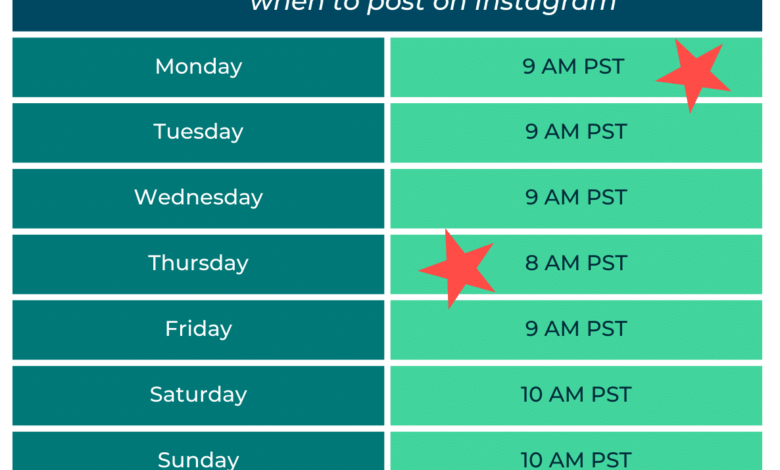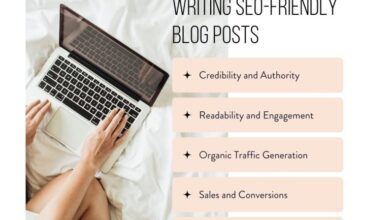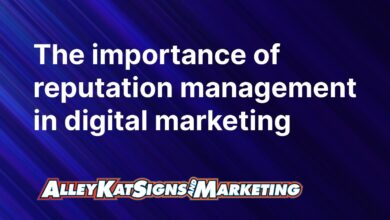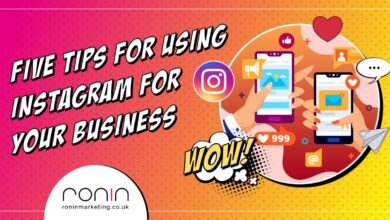
The Best Times to Post on Social Media
The best times to post on social media? It’s the million-dollar question every social media manager grapples with! Getting your content seen by the right people at the right time is crucial for success, and understanding the nuances of optimal posting times across different platforms is key. This isn’t just about throwing content out there; it’s about strategic timing to maximize engagement and reach.
We’ll dive deep into the data, explore various strategies, and help you unlock the secrets to scheduling your posts for maximum impact.
From analyzing audience demographics and engagement patterns to mastering the art of A/B testing and utilizing scheduling tools, we’ll cover it all. We’ll also tackle the complexities of global audiences and seasonal fluctuations, ensuring your social media strategy is as dynamic as your brand. Get ready to transform your social media game!
Optimal Posting Times Across Platforms
Unlocking the secrets to maximizing your social media reach hinges on understanding when your audience is most active. Posting at the right time can significantly boost engagement, leading to increased brand visibility and ultimately, better results. This post dives into the optimal posting times for various platforms, backed by data and insights.
Optimal Posting Times by Platform, The best times to post on social media
Determining the ideal posting time requires considering several factors, most notably audience demographics and platform-specific user behavior. For instance, a business targeting a younger demographic on Instagram might see better results posting in the evenings, while a professional networking platform like LinkedIn might see peak engagement during business hours. The following table summarizes generally accepted best times, but remember that these are guidelines, and consistent A/B testing is crucial for fine-tuning your posting schedule.
| Platform | Weekday | Weekend | Time of Day |
|---|---|---|---|
| Tuesday, Wednesday, Thursday | Saturday, Sunday | 1-3 PM and 6-8 PM | |
| Monday, Tuesday, Wednesday, Thursday | Sunday | 10 AM – 2 PM and 6 PM – 9 PM | |
| Monday – Friday | Saturday and Sunday | 12 PM – 3 PM and 5 PM – 6 PM | |
| Tuesday, Wednesday, Thursday | Generally lower engagement | 10 AM – 11 AM and 1 PM – 4 PM |
Factors Influencing Optimal Posting Times
Several factors influence the success of your posting schedule. Audience demographics play a crucial role. For example, a younger audience might be more active on social media in the evenings and weekends, while a professional audience might be more engaged during weekday business hours. Analyzing your own platform analytics is key to understanding your specific audience’s behavior.
Consider factors like location, age, and interests. For example, a clothing brand targeting teenagers in the US might find that posting during after-school hours and on weekends yields the best results, while a B2B SaaS company targeting professionals in Europe might see higher engagement during typical European business hours. Additionally, the type of content you’re sharing impacts engagement.
Visual content often performs well on platforms like Instagram, while more text-heavy content might be better suited for LinkedIn. Consistent monitoring and adjustment of your posting schedule based on your own data will be crucial for long-term success.
Impact of Audience Time Zones: The Best Times To Post On Social Media
Reaching a global audience through social media presents exciting opportunities, but also significant challenges. The simple act of scheduling a post becomes a complex calculation when your followers are spread across numerous time zones. Ignoring these differences can lead to significantly reduced engagement, as your perfectly timed post might land in the middle of the night for a large portion of your audience.Understanding and adapting to different time zones is crucial for maximizing your social media reach and impact.
Failing to do so means potentially missing out on peak engagement periods for significant segments of your audience, resulting in lower visibility and diminished return on investment. This necessitates a strategic approach to scheduling posts that considers the diverse geographical locations of your followers.
Strategies for Managing Global Audience Time Zones
Effectively managing posting schedules for a global audience requires a multi-faceted approach. The key is to identify your audience’s geographical distribution and then align your posting schedule accordingly. This can involve utilizing social media scheduling tools that allow for advanced time zone selection and analysis. It’s also beneficial to monitor analytics to track engagement rates at different times, providing valuable insights into optimal posting windows for each time zone or region.
Flowchart for Determining Optimal Posting Times Across Time Zones
The following flowchart illustrates a process for determining optimal posting times, taking into account multiple time zones:[Imagine a flowchart here. The flowchart would start with a box labeled “Identify Target Audience Geographic Locations.” This would lead to a box labeled “Determine Peak Engagement Times for Each Location (using analytics data or estimates based on population density and activity patterns).” This would then branch to a box labeled “Prioritize Time Zones Based on Audience Size and Engagement.” This would lead to a box labeled “Utilize Social Media Scheduling Tools to Schedule Posts.” Finally, there would be a box labeled “Monitor and Analyze Results; Adjust Schedule as Needed.”]The flowchart visually represents the iterative process involved.
Starting with the identification of audience location, it progresses through data analysis, prioritization, scheduling, and ongoing monitoring to optimize the posting strategy. The process is iterative, continuously refined based on performance analysis.
Examples of Successful Time Zone Management
Several businesses successfully manage diverse audiences across different time zones. For example, a large international retailer might use sophisticated analytics to identify peak engagement times in various regions – perhaps discovering that their US audience is most active in the late afternoon, while their Asian audience is most active in the early morning. This allows them to schedule posts to reach each segment at its most receptive time.
Another example could be a global news organization that utilizes automated posting systems to distribute content in real-time, adapting to the local news cycles and preferences of their diverse audience. This ensures that no matter where their readers are located, they receive timely and relevant information.
Analyzing Engagement Metrics
Understanding when your audience is most active is only half the battle. To truly optimize your posting schedule, you need to analyze how your posts perform. This involves tracking key engagement metrics and using that data to refine your strategy. By understanding what resonates with your audience and when, you can significantly improve your social media ROI.
Analyzing engagement metrics allows you to move beyond simple reach and impressions and delve into the true effectiveness of your posting times. Instead of guessing, you’ll be basing your schedule on concrete data, leading to more efficient resource allocation and a stronger online presence.
Key Engagement Metrics and Their Relevance
Several key metrics provide valuable insights into the success of your social media posts at different times. Monitoring these consistently allows you to identify patterns and make data-driven decisions about your posting schedule. Ignoring these crucial indicators can lead to missed opportunities and a less effective social media strategy.
- Reach: This metric shows the total number of unique users who saw your post. A higher reach indicates your content is successfully breaking through the algorithm and reaching a wider audience. Analyzing reach at different posting times helps determine when your content has the greatest visibility.
- Impressions: This counts the total number of times your post was displayed, including multiple views by the same user. While reach shows unique users, impressions reflect the overall visibility of your post. A high impression count, particularly compared to reach, might suggest your content is being seen repeatedly by the same users, potentially indicating a need to diversify your content or posting times.
- Engagement Rate: This is a crucial metric, calculated by dividing the total number of engagements (likes, comments, shares, clicks, etc.) by the number of reach, expressed as a percentage. A high engagement rate signifies that your content is resonating with your audience and prompting interaction. Tracking engagement rates at different times helps identify optimal posting periods for maximizing interaction.
- Click-Through Rate (CTR): This metric measures the percentage of users who clicked on a link in your post. A high CTR indicates your content is compelling enough to encourage users to take the next step, whether it’s visiting your website, making a purchase, or learning more about your brand. Analyzing CTR at different posting times helps you understand when your audience is most receptive to calls to action.
- Website Traffic from Social Media: If your goal is to drive traffic to your website, monitoring the number of website visits originating from your social media posts is critical. Tracking this metric at different posting times allows you to pinpoint the times when your posts are most effective at sending users to your website.
Using Analytics Data to Refine Posting Schedules
Social media platforms provide robust analytics dashboards. Leveraging this data is key to improving your posting schedule. By consistently monitoring the metrics discussed above, you can identify trends and patterns that inform your strategy.
For example, if you consistently see higher engagement rates for posts published between 10 AM and 12 PM on weekdays, you should prioritize scheduling your most important content during those times. Conversely, if you find that weekend posts underperform, you might adjust your content strategy or reduce your posting frequency on weekends. Remember, this is an iterative process.
Continuously monitor your results, adjust your posting schedule as needed, and always test different approaches to find what works best for your specific audience.
Let’s say a clothing brand notices significantly higher engagement rates (likes, comments, shares) and website traffic from posts published between 6 PM and 8 PM on weekdays. This suggests their target audience, likely working professionals, is most active on social media after work. They could then shift more of their high-value content to this time slot, maximizing their reach and engagement.
Types of Content and Posting Frequency

Source: mayple.com
Finding the sweet spot for posting frequency depends heavily on the type of content you’re sharing and your audience’s engagement patterns. Simply posting more isn’t always better; it can lead to audience fatigue and decreased engagement. Strategic planning, considering content type and optimal times, is key to maximizing your social media reach.Different content formats resonate differently with audiences and demand varying posting frequencies.
Over-saturation with one type of content can quickly lead to disinterest, while a balanced approach keeps your feed fresh and engaging. Let’s explore how different content types influence posting frequency and overall strategy.
Optimal Posting Frequencies by Content Type
Research suggests that a mix of content types is crucial for maintaining audience interest. However, the optimal frequency for each varies significantly. For instance, while short, engaging video content might benefit from daily posting, text-based updates might be better suited to a less frequent schedule to avoid overwhelming followers.A study by Buffer revealed that the ideal posting frequency varies wildly across platforms.
While Instagram users might engage more with daily image posts, Twitter users might respond better to several short text updates throughout the day. However, the key is to analyze your own analytics and adjust accordingly. No one-size-fits-all solution exists. For example, if you notice a significant drop in engagement with daily video posts, consider reducing the frequency to every other day or even twice a week, and observe the changes in your analytics.
The goal is to find a rhythm that works for your specific audience and content strategy. This requires consistent monitoring and adaptation.
Content Calendar Template Integrating Optimal Posting Times
A well-structured content calendar is invaluable for maintaining a consistent posting schedule across different platforms. The following template integrates optimal posting times based on content type, acknowledging that these are general guidelines and require adaptation based on individual audience behavior.
| Day | Time (Platform Specific) | Content Type | Platform | Notes |
|---|---|---|---|---|
| Monday | 9:00 AM (Instagram), 12:00 PM (Twitter) | Image Post (Inspirational Quote) | Instagram, Twitter | High engagement time for visual content. |
| Tuesday | 2:00 PM (Facebook), 6:00 PM (LinkedIn) | Blog Post Link | Facebook, LinkedIn | Target professional audiences during working hours. |
| Wednesday | 10:00 AM (All Platforms) | Short Video (Behind-the-Scenes) | All | Consistent mid-morning engagement across platforms. |
| Thursday | 7:00 PM (Instagram), 8:00 PM (TikTok) | User-Generated Content (Re-post) | Instagram, TikTok | Leverage community engagement during prime evening hours. |
| Friday | 1:00 PM (All Platforms) | Text-based Update (Weekend Plans) | All | Casual, engaging content during lunch breaks. |
This template provides a framework. It’s crucial to monitor your analytics and adjust times and content types based on what resonates best with your audience. A/B testing different posting times and content combinations is essential for optimization.
Content Type Influence on Ideal Posting Time
The type of content significantly impacts the optimal posting time. Visually rich content, such as images and videos, often performs better during times when people are more likely to be passively consuming content, such as during lunch breaks or evenings. In contrast, text-based updates might fare better during working hours, targeting professionals checking their feeds during breaks. For example, a thought-provoking article might do better on LinkedIn during the workday, whereas a fun image might perform better on Instagram in the evening.
The key is to understand your target audience’s daily routines and tailor your posting schedule accordingly.
A/B Testing Posting Times
Optimizing your social media strategy isn’t just about knowing
- when* to post generally; it’s about pinpointing the
- best* times for
- your* specific audience. This is where A/B testing becomes invaluable. By systematically testing different posting times, you can gather concrete data to inform your scheduling and significantly improve your engagement rates. This process allows you to move beyond generalized advice and create a truly data-driven social media calendar.
A/B testing posting times involves comparing the performance of two or more variations of your posting schedule. You’ll control all other variables – the type of content, the platform, even the day of the week – to isolate the impact of posting time. By analyzing the results, you can identify the time slots that resonate most effectively with your audience.
This iterative process leads to continuous improvement and maximized reach.
Methodology for A/B Testing Posting Times
To effectively A/B test posting times, you need a structured approach. First, select a specific period for your test, such as two weeks. Choose two or more distinct posting times – perhaps midday and evening – and post identical content at each time. Crucially, ensure your audience remains consistent across both test groups. This eliminates the influence of external factors.
Finally, meticulously track your key engagement metrics (likes, comments, shares, clicks, etc.) for each posting time. After the test period, compare the results to determine which time slot yielded the highest engagement. Remember to repeat this process to confirm your findings and adapt your strategy based on evolving audience behavior.
Steps Involved in an A/B Test of Posting Times
The following table Artikels the key steps involved in conducting a successful A/B test for social media posting times. Each step is critical for ensuring the accuracy and reliability of your results. Remember to maintain consistency throughout the process to minimize bias.
| Step | Action | Metrics to Track | Considerations |
|---|---|---|---|
| 1. Define Objectives | Clearly state your goals for the A/B test (e.g., increase engagement, improve reach). | None (This step is about setting goals) | Ensure your goals are measurable and achievable. |
| 2. Select Posting Times | Choose two or more distinct posting times to compare. | Reach, Impressions | Consider your target audience’s typical online activity patterns. |
| 3. Create Identical Content | Develop identical pieces of content to be posted at each chosen time. | Engagement Rate (Likes, Comments, Shares, Clicks) | Maintain consistency in content quality and messaging. |
| 4. Execute the Test | Post the identical content at the predetermined times. | Website Traffic (if applicable) | Ensure all posts are scheduled accurately and published as planned. |
| 5. Monitor and Analyze | Track key metrics throughout the test period. | Conversion Rate (if applicable) | Use a spreadsheet or social media analytics tools to record and analyze data. |
| 6. Interpret Results | Compare the performance of each posting time based on your chosen metrics. | Click-Through Rate (CTR) | Determine which posting time resulted in the highest level of engagement. |
| 7. Refine Strategy | Adjust your posting schedule based on the test results. | Audience Growth | Continuously monitor and refine your strategy based on ongoing performance. |
Examples of Successful A/B Tests
While specific data from private A/B tests is often confidential, the general principle remains consistent. Imagine a company A/B testing two posting times for a Facebook post announcing a new product: 12 PM and 6 PM. If the 6 PM post consistently receives significantly more likes, comments, and shares, it indicates that the company’s target audience is more engaged during the evening.
Another example could involve a blog testing tweets announcing new blog posts at 9 AM and 3 PM. Higher click-through rates from the 9 AM tweets could suggest that their audience is more likely to engage with content first thing in the morning. These findings would then inform future posting schedules.
Tools and Technologies for Scheduling Posts

Source: consultwebs.com
Scheduling your social media posts is crucial for maintaining a consistent online presence and maximizing engagement. The right tool can significantly streamline your workflow, allowing you to plan content in advance and free up time for other important tasks. Choosing the best tool depends on your specific needs, budget, and the platforms you use.
Social Media Scheduling Tool Comparison
Several excellent social media scheduling tools are available, each with its own strengths and weaknesses. The following table compares some popular options, focusing on key features and pricing. Remember that pricing tiers and features can change, so it’s always best to check the provider’s website for the most up-to-date information.
| Tool | Key Features | Pricing |
|---|---|---|
| Buffer | Scheduling across multiple platforms, analytics dashboards, team collaboration features, content library. | Free plan available; paid plans start around $6 per month. |
| Hootsuite | Extensive platform support, robust analytics, social listening capabilities, team management tools, advanced scheduling features. | Free plan available; paid plans start around $49 per month. |
| Later | Strong visual planning features, particularly for Instagram, link-in-bio management, content calendar, analytics. | Free plan available; paid plans start around $15 per month. |
| Sprout Social | Advanced analytics, social listening, CRM features, robust reporting, team collaboration, extensive platform support. | Paid plans only, starting around $149 per month. |
| MeetEdgar | Content recycling and repurposing features, evergreen content scheduling, built-in content calendar, focus on automated posting. | Paid plans only, starting around $49 per month. |
Workflow of Using a Social Media Scheduling Tool
The workflow for using a social media scheduling tool is generally straightforward. A visual representation would show a linear process, starting with content creation and ending with post analysis.
Imagine a flowchart. The first box would be “Create and Prepare Content.” This leads to the box “Choose Scheduling Tool and Connect Accounts.” Then, “Schedule Posts using Calendar/Interface” follows. This box leads to “Review and Edit Scheduled Posts.” Next is “Publish Posts Automatically.” Finally, the flowchart ends with “Analyze Performance and Adjust Strategy.” Each box would have connecting arrows illustrating the sequential nature of the process.
Benefits of Using Scheduling Tools for Consistent Posting
Using a social media scheduling tool offers several significant advantages for maintaining a consistent posting schedule. These tools eliminate the need for manual posting at specific times, allowing for better time management and a more strategic approach to content distribution. They also enable the creation of a content calendar, ensuring a consistent flow of posts across all platforms, leading to increased brand visibility and engagement.
Furthermore, scheduling tools often provide valuable analytics data, allowing for informed adjustments to your posting strategy based on past performance. For example, a business could use data on post engagement to identify optimal posting times and content types, ultimately leading to improved marketing ROI.
Seasonal and Event-Based Posting

Source: hootsuite.com
Optimizing your social media strategy goes beyond simply finding the best times to post; it also involves understanding and leveraging the power of seasonal trends and events. The timing of your posts can significantly impact their reach and engagement, especially during periods of heightened consumer activity or specific cultural moments. By strategically adjusting your posting schedule, you can capitalize on these opportunities and maximize your social media ROI.Successful seasonal and event-based posting requires careful planning and a deep understanding of your target audience’s behavior.
Consider what holidays, promotions, or significant events are relevant to your business and your audience. Analyzing past performance data around similar events can inform your strategy, helping you identify peak engagement times and tailor your content accordingly. Don’t forget to consider the emotional context of the season or event; your messaging should resonate with the prevailing mood and expectations.
For instance, a lighthearted approach might be appropriate for summer, while a more reflective tone might be better suited for the winter holidays.
Seasonal Trends and their Impact on Posting Times
Seasonal shifts influence consumer behavior and online activity. For example, during the summer months, people tend to be more active outdoors and less engaged with their phones, potentially leading to lower engagement rates on social media during peak daylight hours. Conversely, winter holidays often see a surge in online activity, as people spend more time indoors. Businesses should adapt their posting schedules to align with these seasonal patterns.
A retailer selling swimwear might see better results posting in the morning or evening during summer, when people are less likely to be at the beach, whereas a retailer selling winter clothing might find higher engagement during lunch breaks or evenings in the winter months.
Strategies for Adjusting Posting Schedules Based on Events
Adjusting your posting schedule around holidays and promotions requires a proactive approach. Start by creating a content calendar well in advance, identifying key dates and planning relevant content. For example, a clothing brand might plan a series of posts showcasing their fall collection leading up to the start of autumn, and increase the frequency of posts around Black Friday and Cyber Monday.
Consider using A/B testing to experiment with different posting times and content formats during these periods to optimize your results. Monitoring engagement metrics in real-time allows for quick adjustments and ensures you’re reaching your audience effectively.
Examples of Events Requiring Social Media Schedule Adjustments
The importance of adjusting your social media posting schedule based on specific events cannot be overstated. Failure to do so could mean missing opportunities to connect with your audience during key moments.
- Major Holidays: Christmas, Thanksgiving, Easter, Hanukkah, Diwali, Ramadan – these holidays often influence consumer behavior and online activity, requiring adjustments to posting times and content to align with the festive spirit.
- Sporting Events: Super Bowl, World Cup, Olympics – these events attract huge audiences and present opportunities for brands to engage with fans through relevant content and timely posts.
- Sales and Promotions: Black Friday, Cyber Monday, seasonal sales – posting frequency and timing should be optimized around these high-traffic periods to maximize the impact of promotional messages.
- Cultural Events: National celebrations, music festivals, film premieres – aligning your social media content with culturally relevant events can foster a stronger connection with your audience.
- Industry-Specific Events: Trade shows, conferences, webinars – posting about your presence and participation in industry-specific events can increase brand visibility and engagement within your niche.
Final Thoughts
Mastering the art of social media posting isn’t about sticking to a rigid schedule; it’s about understanding your audience, analyzing your data, and adapting your strategy. By combining data-driven insights with a keen understanding of your audience’s behavior, you can craft a posting schedule that resonates and drives real results. Remember, consistency and thoughtful planning are your best allies in this ever-evolving digital landscape.
So, go forth and conquer the world of social media engagement!
FAQ Compilation
What if my audience is spread across multiple time zones?
Prioritize your largest audience segments and consider using scheduling tools that allow for targeted posting based on time zone.
How often should I post on each platform?
It depends on your audience and content strategy. Experiment to find the sweet spot that balances frequency with engagement without overwhelming your followers.
What are some free tools for scheduling posts?
Many platforms offer basic scheduling features. There are also free tiers available for some popular scheduling tools, though they may have limitations.
How do I know if my posting times are working?
Regularly track key metrics like engagement rate, reach, and click-through rates to assess the effectiveness of your posting schedule. Use this data to refine your strategy.





